Tired of flimsy eco-tableware that can’t handle the heat or cold? Finding reliable options is tough. We offer truly versatile, sustainable solutions for your business needs.
Yes, it’s absolutely possible! Modern eco-friendly tableware, especially items made from materials like CPLA (crystallized PLA) and specific types of bagasse, are designed to be both microwavable and freezer-safe, offering convenience without compromising sustainability. We’ll guide you through it.
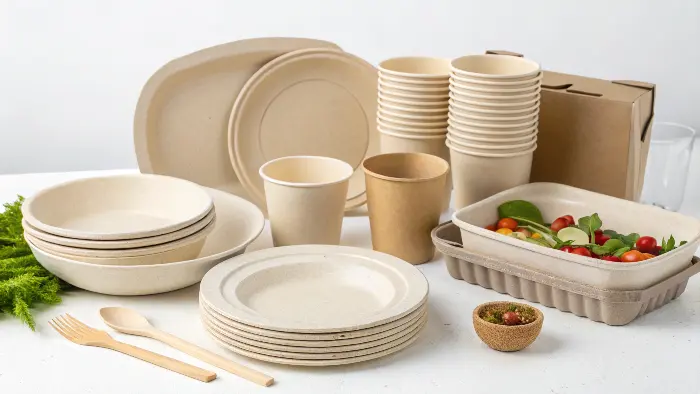
It’s a common headache for businesses like yours, I know. You want to do the right thing for the planet, but your customers also need practical tableware that can go from the freezer to the microwave. It feels like a big ask sometimes, doesn’t it? But trust me, the technology and materials have come a long way. Let’s dive into what makes this possible and what you, as a buyer, really need to look out for. I think you’ll be pleasantly surprised by the options available today.
What Eco-Friendly Materials Actually Work in Microwaves and Freezers?
Struggling to find eco-tableware that won’t warp or melt? It’s a common frustration. We can help you identify materials that truly perform under temperature stress.
The best eco-friendly materials for microwave and freezer use include CPLA (crystallized polylactic acid), specially treated bagasse (sugarcane fiber), and some bamboo fiber products. These are engineered for temperature resilience, unlike standard PLA or untreated plant fibers.
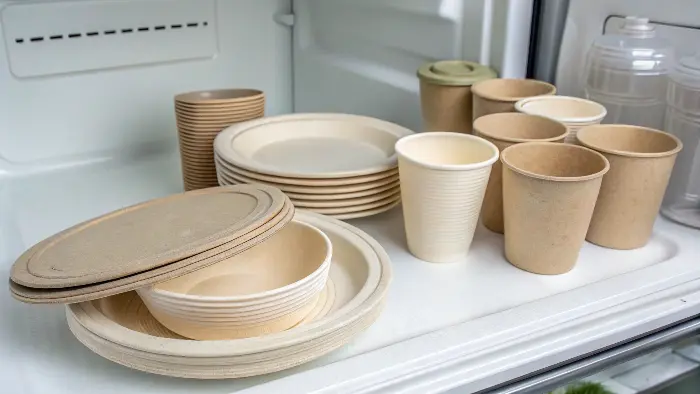
So, you’re looking for the real deal, huh? Not all "eco-friendly" labels mean the product can handle your kitchen’s demands. I’ve seen businesses get caught out by this. The key is understanding the specific material properties. For instance, standard PLA is great for cold items, but it’ll likely warp in the microwave. That’s where CPLA comes in – it’s PLA that’s been heat-treated to withstand higher temperatures. Similarly, while bagasse is naturally quite robust, some bagasse products are enhanced for better performance in microwaves and freezers. It’s not just about being biodegradable; it’s about functional, real-world use. We always tell our clients, like Jacky who’s a packaging specialist, to look beyond the green label and ask about temperature tolerances. It’s about finding that sweet spot between sustainability and practicality. This is super important for food service businesses where efficiency is king.
Key Material Properties for Temperature Resistance
| Feature | Importance for Microwave/Freezer Use | Common Materials Exhibiting this |
|---|---|---|
| Thermal Stability | Prevents warping, melting, or cracking at high/low temperatures. | CPLA, Specially Treated Bagasse |
| Moisture Barrier | Resists sogginess or degradation from condensation or food moisture. | Coated Bagasse, CPLA |
| Non-Toxic | Ensures no harmful chemicals leach into food when heated or frozen. | All food-grade certified materials |
| Durability | Maintains structural integrity during temperature changes and handling. | Bamboo Fiber, CPLA, Bagasse |
PLA, Bagasse, Bamboo: How Do These Popular Eco-Materials Handle Temperature Extremes?
Confused about which popular eco-material is best for hot and cold applications? It’s tricky! We’ll break down how PLA, bagasse, and bamboo perform.
CPLA (crystallized PLA) excels in both microwave and freezer. Bagasse is generally good, especially treated versions. Bamboo fiber products vary; some are suitable, others less so for extreme temperatures. Always check specifications!
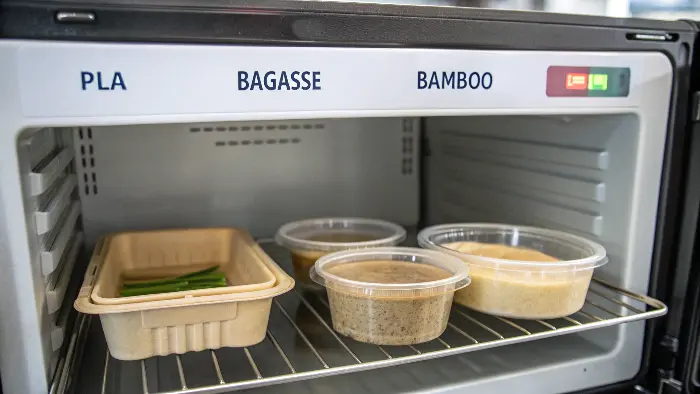
Let’s get into the nitty-gritty of these common materials. I talk to buyers like Jacky all the time, and this is a frequent question.
PLA (Polylactic Acid): Standard PLA is fantastic for cold foods and drinks. Think salad containers or cold cups. But, put it in the microwave, and you’ll likely have a melted mess. It typically can’t handle temperatures above 40-50°C (104-122°F). For freezer use, it can become brittle.
CPLA (Crystallized Polylactic Acid): This is where PLA gets interesting for your needs! Through a crystallization process, CPLA can withstand much higher temperatures, often up to 85-100°C (185-212°F), making it suitable for hot foods and microwaving. It also performs better in the freezer than standard PLA. We often recommend CPLA cutlery.
Bagasse (Sugarcane Pulp): This is a rockstar material. It’s a byproduct of sugarcane processing, so it’s super sustainable. Bagasse products are generally microwave and freezer safe. They can typically handle temperatures from -25°C to 220°C (-13°F to 428°F), though the higher end is usually for oven use if specified. For microwaving, it’s excellent. One thing to note: uncoated bagasse can absorb some moisture over long periods, but for typical meal usage, it’s great.
Bamboo Fiber: Bamboo is strong and sustainable. Products made from bamboo fiber mixed with binders can be good, but their temperature resistance varies wildly depending on the manufacturing process and the type of binder used. Some are fine for microwaving, others are not. It’s crucial to check manufacturer guidelines. We always advise clients to request spec sheets for bamboo items. It’s not as straightforward as CPLA or bagasse for temperature extremes, in my experience.
Are There Other Eco-Options Besides the Usual Suspects for Microwaves and Freezers?
Wondering if there are other innovative eco-materials for temperature challenges? Beyond PLA and bagasse, options exist. We can explore these emerging sustainable choices together.
Yes, beyond CPLA and bagasse, look into wheat straw composites and some specially engineered paper products. These can offer good microwave and freezer performance, expanding your sustainable tableware choices.
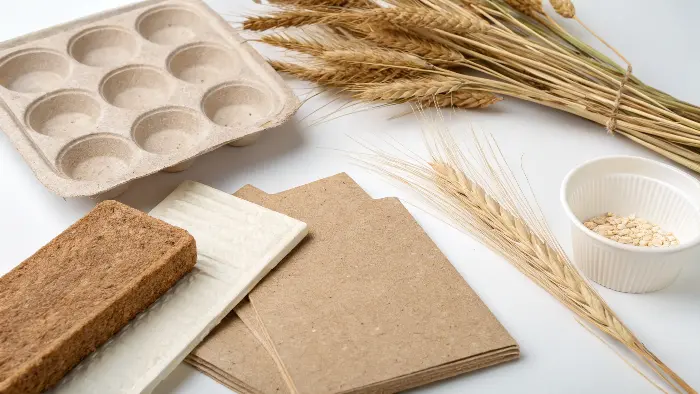
It’s easy to get focused on the big names like PLA and bagasse, and they are fantastic, don’t get me wrong. But as a company that’s always looking for sustainable solutions, we at Ecosourcecn keep an eye on other materials too. For instance, wheat straw products are gaining traction. Similar to bagasse, wheat straw is an agricultural byproduct. When processed into tableware, it often shares similar properties, including good resistance to heat and cold. Many wheat straw items are microwave and freezer safe, offering another excellent compostable option. Then there are engineered paper products. I’m not talking about your standard paper plate that gets soggy in two seconds! Modern food-grade paperboard, sometimes with a bio-coating (like PLA-lining), can be surprisingly robust. These are often designed for takeaway containers that might be refrigerated and then reheated. The key here is the type of paper and any coating used. It’s worth asking suppliers about these alternatives, especially if you’re looking to diversify your eco-friendly range. Sometimes a unique material can also be a selling point for your brand!
Exploring Alternative Eco-Materials
| Material | Microwave Safe? | Freezer Safe? | Key Considerations |
|---|---|---|---|
| Wheat Straw | Often Yes | Often Yes | Similar to bagasse, check specific product ratings. |
| Engineered Paper | Varies | Varies | Depends on coating (e.g., PLA-lined) and paper thickness. |
| Palm Leaf | Yes (short time) | Yes | More rustic look, can be brittle when frozen for long. |
| Recycled Paperboard | Varies | Varies | Check for food-grade status and any liners. |
How Do Certifications Prove Eco-Tableware is Safe for Microwaves, Freezers, and the Planet?
Worried if "eco-friendly" claims are legitimate and safe? Certifications are confusing. We help you understand which ones guarantee product safety and true sustainability.
Certifications like BPI (for compostability in the US), TÜV Austria (OK compost HOME/INDUSTRIAL), FDA, and LFGB (for food contact safety) are crucial. They verify material safety and end-of-life claims, ensuring reliability.
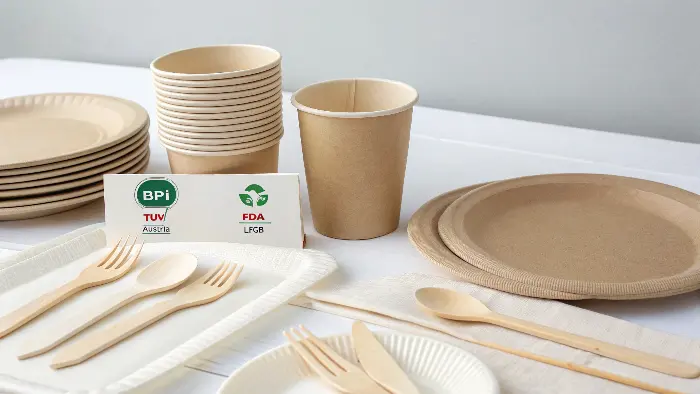
This is a big one, and something Jacky, with his background in environmental science, would definitely focus on. Certifications aren’t just fancy logos; they’re your assurance that a product does what it says it does and is safe. When we talk about microwavable and freezer-safe, food contact safety is paramount.
FDA (U.S. Food and Drug Administration) and LFGB (Lebensmittel-, Bedarfsgegenstände- und Futtermittelgesetzbuch – Germany) are key food safety standards. If a product meets these, it means it’s safe for contact with food and won’t leach harmful chemicals, especially when heated. This is non-negotiable for us at Ecosourcecn.
Then there are the compostability certifications. BPI (Biodegradable Products Institute) is the North American standard for industrial compostability. In Europe, you’ll often see TÜV Austria’s "OK compost INDUSTRIAL" or "OK compost HOME" seals. These tell you the product will break down as claimed under specific conditions.
While these don’t directly certify "microwave-safe" or "freezer-safe" in terms of performance (that’s usually up to manufacturer testing and claims), they ensure the material itself is safe and truly eco-friendly. So, when a supplier says their BPI-certified CPLA fork is microwave-safe, you know the underlying material is sound. It’s about building trust through transparency. I always tell clients: ask for the certs!
What Key Things Should My Business Look for When Sourcing These Specialized Eco-Products?
Feeling overwhelmed by sourcing choices for temperature-safe eco-tableware? It’s a challenge. We guide you to make informed decisions that align with your business needs.
Prioritize clear material specifications (e.g., CPLA, treated bagasse), temperature range data, food safety certifications (FDA, LFGB), and compostability proofs (BPI, TÜV). Also, consider supplier reliability and scalability.
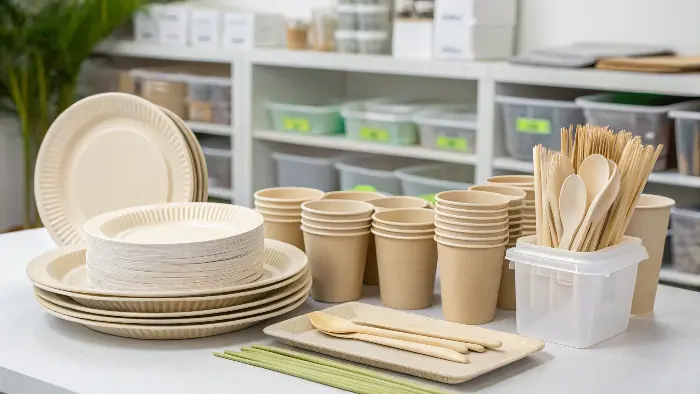
Alright, so you’re ready to source. This is where the rubber meets the road. As someone who helps businesses like yours find the right eco-products, I’ve learned a few things. First, clarity on material and performance is king. Don’t just accept "eco-friendly." Ask: "What exact material is this? What is its certified temperature range for microwave and freezer use?" Get it in writing. Second, request samples and test them yourself! Seriously, put that container in your microwave, freeze that cutlery. See how it holds up under your typical conditions. This is something I always did when I was on the buying side. Third, verify those certifications. Ask for copies of the certificates. A reputable supplier like us at Ecosourcecn will have these readily available. Fourth, think about your specific application. Do you need something for a quick reheat, or will it be frozen for weeks and then microwaved? The demands can vary. Fifth, consider the supplier’s capabilities. Can they handle your volume? What are their lead times? Do they offer private label customization if you need it? It’s not just about the product; it’s about the partnership. Finding a supplier who understands these nuances – like we do – makes a huge difference.
Can We Still Get Custom Branding on Microwavable and Freezer-Safe Eco-Tableware?
Want to maintain your brand identity with eco-tableware but unsure if customization is possible? It’s a valid concern. We can show you how branding works with these specialized items.
Absolutely! Many microwavable and freezer-safe eco-tableware items, like those from CPLA or bagasse, can be custom branded. Options include embossing, debossing, or printing with food-safe, eco-friendly inks.
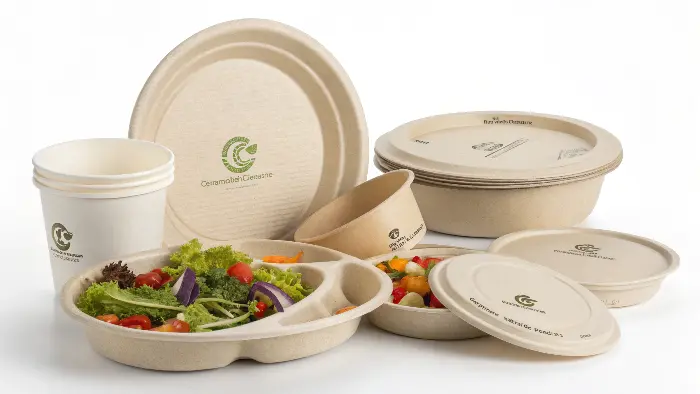
This is a question I get a lot, especially from brands that have worked hard to build their visual identity. The good news is: yes, you absolutely can! Just because a product is specialized for temperature extremes doesn’t mean you have to sacrifice branding. For many items, especially those made from bagasse or even some CPLA products, embossing or debossing is a popular option. This creates a subtle, premium look by pressing your logo or design directly into the material. It’s inherently eco-friendly as it doesn’t add any other materials. For items like CPLA cutlery, sometimes you can get custom colors (though this might affect minimum order quantities). For containers, printing with food-safe, eco-friendly inks is also possible. We work with manufacturers who use soy-based or water-based inks that are much better for the environment than traditional petroleum-based inks. The key is to discuss your branding needs upfront with your supplier. At Ecosourcecn, we offer private label customization and can guide you on the best branding methods for specific materials while ensuring everything remains food-safe and aligns with the product’s eco-credentials. Your packaging specialist, Jacky, would appreciate this level of detail, I’m sure! It’s about making the sustainable choice also the smart brand choice.
Conclusion
Choosing microwavable, freezer-safe eco-tableware is achievable with the right knowledge. Focus on materials, certifications, and supplier transparency for success. We’re here to help you make that switch!


